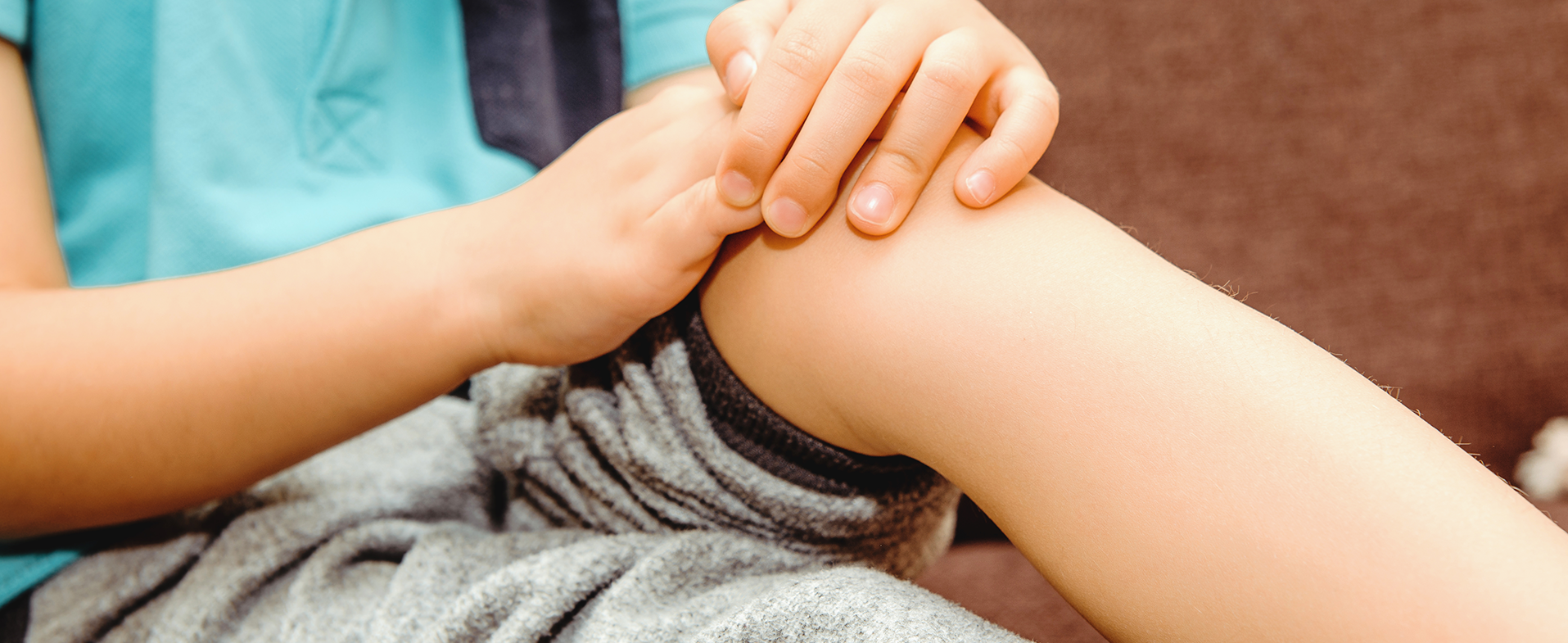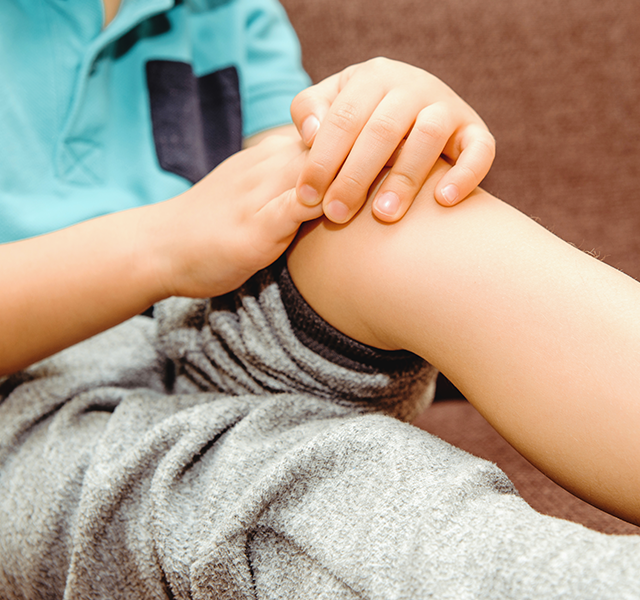If your kid complains about leg and knee pain, it might be time to pull out the measuring tape. It’s not uncommon for children to feel some aches in their bones or joints during periods of growth.
Growing pains can start in early childhood and continue through teenage growth spurts. “Not every child gets growing pains,” says Ahmad Bazzi, M.D., a sports medicine doctor at Henry Ford Health. “It’s more common in kids who are growing and also doing sports and other repetitive physical activities.”
Even when growth spurts are uncomfortable, that pain is typically not a cause for concern. Learn why growing pains happen and how you can help ease your child’s pain.
What Happens During a Growth Spurt
In growing kids, bones, muscles and tendons are constantly changing. The long bones in the legs (thigh bone, shinbone and calf bone) contain growth plates (soft tissue at the ends of bones).
As kids grow, those growth plates expand and eventually harden into bone. They finish hardening by the time a child stops growing (around the end of puberty).
“Muscles and tendons are attached to the growth plates,” says Dr. Bazzi. “During growth spurts, the muscles are getting stronger and that can put more stress on the plates and cause pain.”
What Do Growing Pains Feel Like?
Kids with growing pains often complain about throbbing or aching in their legs and knees. Typically, the pain is more noticeable at the end of the day or overnight. According to Dr. Bazzi, growing pains affect both legs about 40% of the time.
“Unlike an acute sports injury, these pains usually come on gradually,” he says. “But kids often report that specific movements or activities trigger or worsen their pain.”

Go Where The Pros Go
How to Relieve Growing Pains
It might not be what your kids want to hear, but rest is really the most important way to treat growing pains. “That pain is your body telling you to rest,” says Dr. Bazzi.
Often, taking a break from activities that trigger the pain is enough. It’s also okay to use an over-the-counter anti-inflammatory (such as ibuprofen) to temporarily relieve pain and soreness.
Working with a trainer or physical therapist might help older children and teens experiencing pain from sports activities. Sometimes the pain is the result of tight leg muscles that put excess strain on the growth plate.
When to See a Doctor About Pain During Growth Spurts
Growing pains are often short-lived and don’t need treatment. But if your child has ongoing pain that interferes with activities they enjoy, it’s time to see a doctor.
Your child’s doctor will do a thorough physical exam and ask about activities that make the pain worse. They may also take X-rays or other imaging tests to check for harm or stress to the growth plates.
“The tendons that attach to the growth plate can become weak or damaged during growth spurts,” says Dr. Bazzi. “Kids who try to play through the pain are especially at risk.” Serious conditions affecting the growth plate include:
- Growth plate fractures, when a break occurs in the growth plate
- Osgood-Schlatter disease, inflammation in the growth plate at the top of the shin, causing knee pain
- Sever’s disease, inflammation in the growth plate of the heel, causing heel pain
"All of these are temporary conditions that will go away, especially after your child finishes growing,” says Dr. Bazzi. “In the meantime, it’s important for your child to learn to listen to what their body is telling them and take a break from activities when needed.”
Reviewed by Ahmad Bazzi, M.D., a sports medicine doctor who sees patients at Henry Ford Medical Center – Fairlane.



